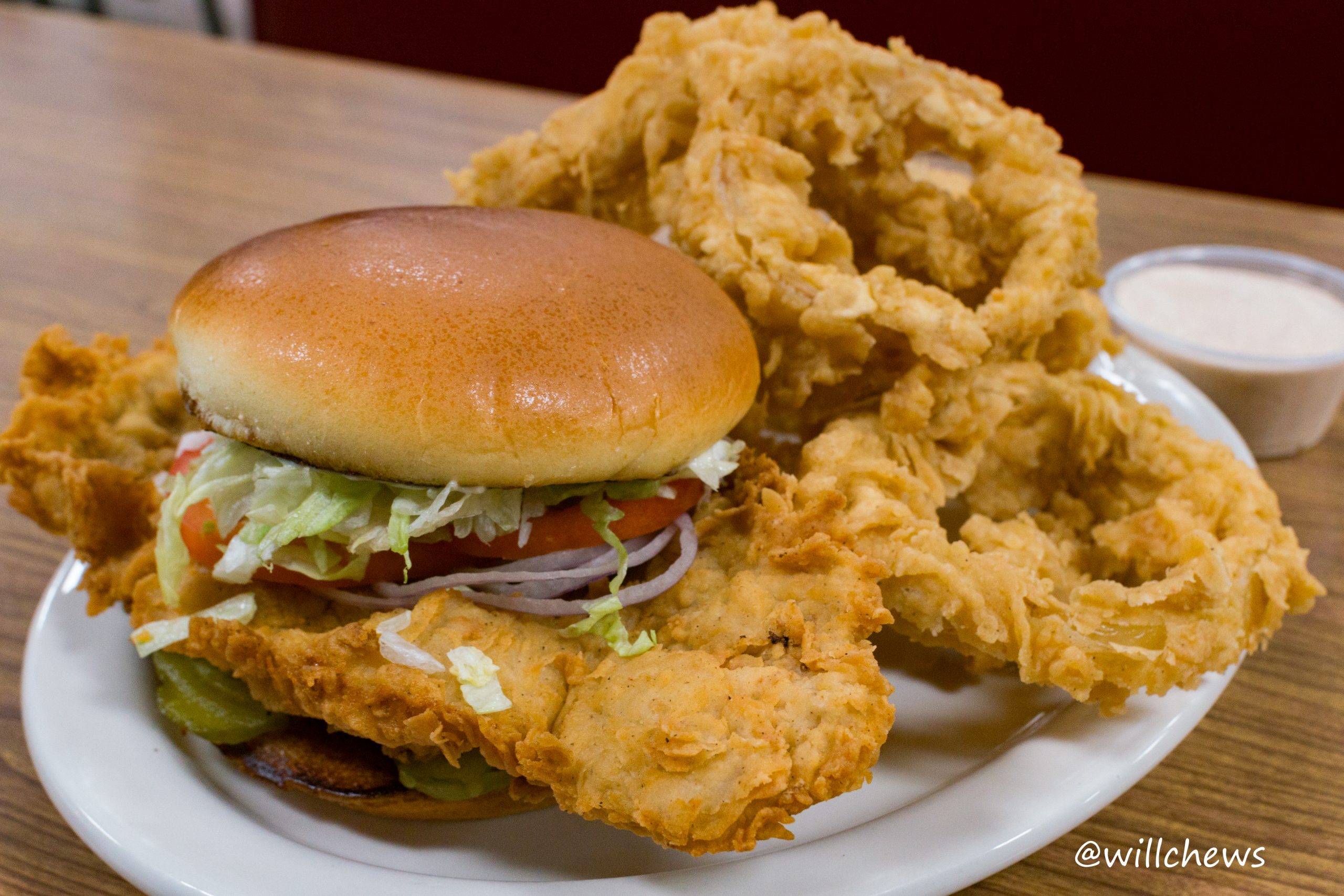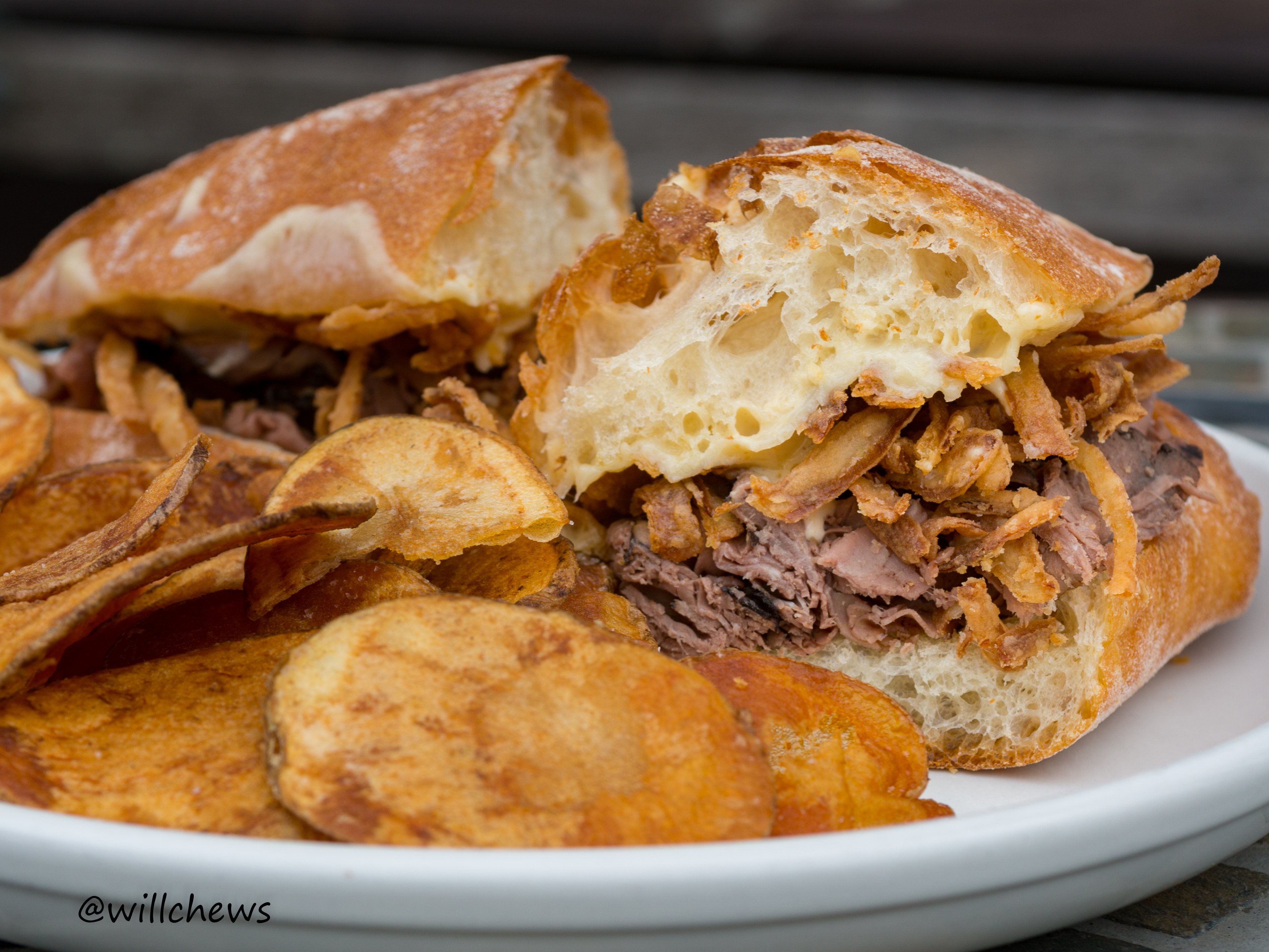Steer-In Diner
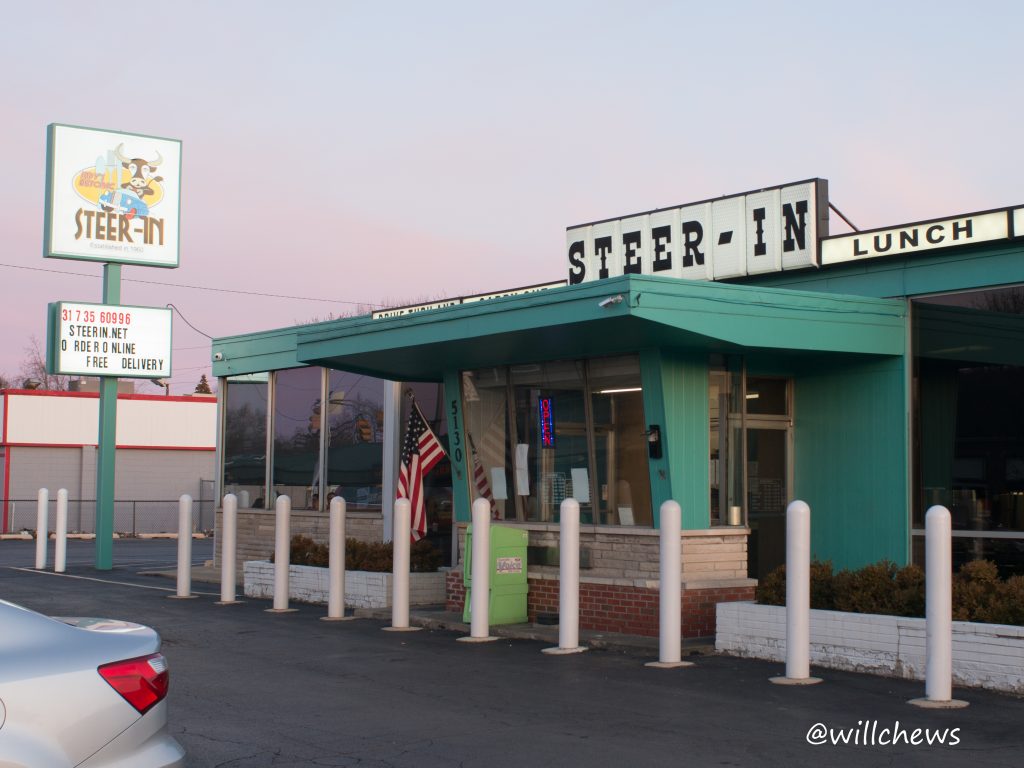
Steer-In has been around since 1960 and gained additional fame in the past decade as it was featured on Guy Fieri’s Diners, Drive-Ins, and Dives show in 2011. The restaurant still has Fieri’s poster hanging over the kitchen entrance. Like every other sandwich on this list, Steer-In’s tenderloin sandwich has regularly featured on best-of lists. Each tenderloin is pounded fresh to order, marinated in buttermilk, and breaded with a mix of cornmeal and flour. The deep-fried version is the most popular, but a number of patrons order the grilled version because of diabetic restrictions.

The standout feature of the Steer-In’s tenderloin was the thickness of the meat. While the tenderloin itself was roughly a 7″ (17.5cm) oval that spilled past the brioche bun by a few bites on each side–relatively tame by pork tenderloin standards–the meat itself was thickest of any of the ones I had that day, roughly about 3/4 of an inch thick, very juicy and tender. The breading was done well, with no visible meat-breading separation, fried with not much extra oil logged in the breading, though without much flavor or seasoning in the breading. While the lack of seasoning in the breading would normally be a weakness–I generally like to add a bit of cayenne pepper and even garam masla to my fried chicken breading–it would become a comparative strength after eating some of the other tenderloins.

Toppings included shredded lettuce, tomato, and pickles, and comes with fries standard. However, for only a dollar more, one can get some beautiful onion rings that use the same batter/breading as the tenderloin. The caveat is that while that may have worked in isolation, when paired with the tenderloin it was almost distracting, sort of like similarity-driven cognitive dissonance. (Think of a blue-on-blue outfit) But it’s pretty enough that I’d probably get it again just to make sure.

Hanging by the door was a map-based guestbook showing how far patrons have come to visit Steer-In. Overall, I’m glad that this was my first-ever tenderloin sandwich: I liked it quite a bit, in large part due to the thicker cut of meat that Steer-In uses compared to other places.
Aristocrat Pub

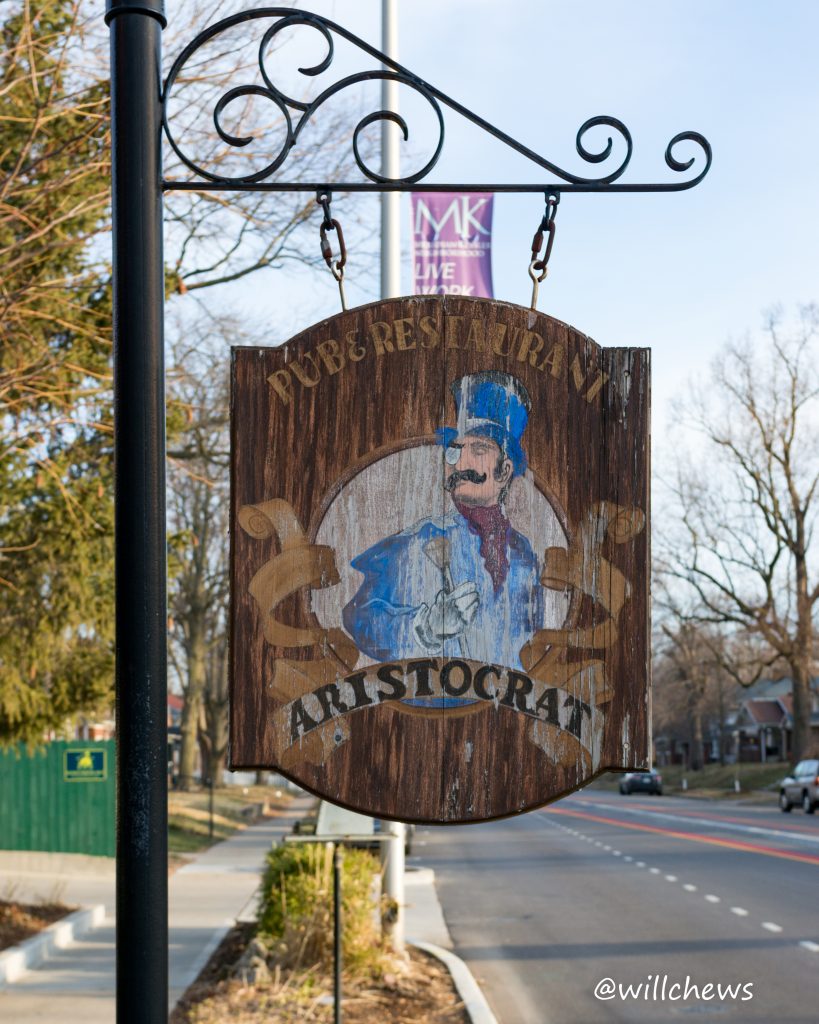
The second tenderloin sandwich comes from the Aristocrat Pub, located in the picturesque SoBro (South of Broad Ripple) neighborhood by the Butler University campus. It’s a large, wood-drenched space featuring a patio, a pub area, and a dining room to accommodate large contingents of fans after Butler basketball games.

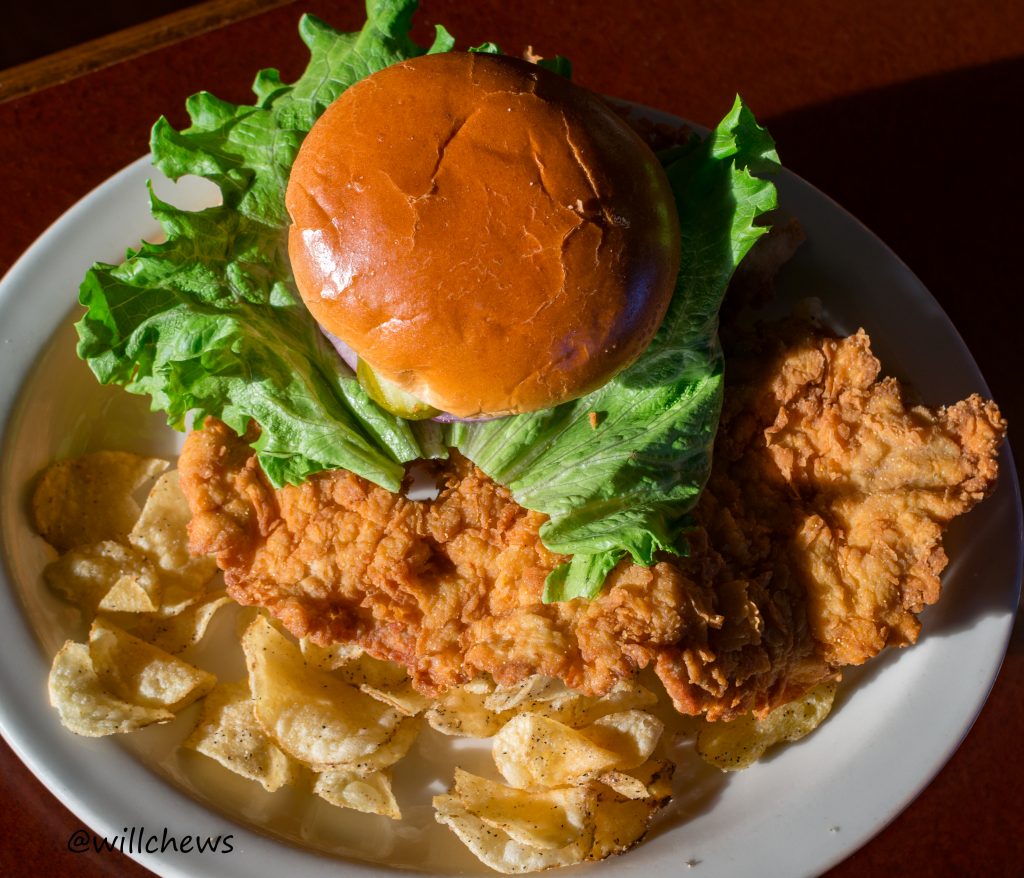
The meat itself was also disappointing. It’s hard for me to report my tasting notes when the meat was pounded so finely to the point of being less than a quarter of an inch (.6cm) thick. That created a inevitably “tender” cut of meat, but it was so thin that I had to take three separate bites just to even get a sense if it was moist. (It was not)
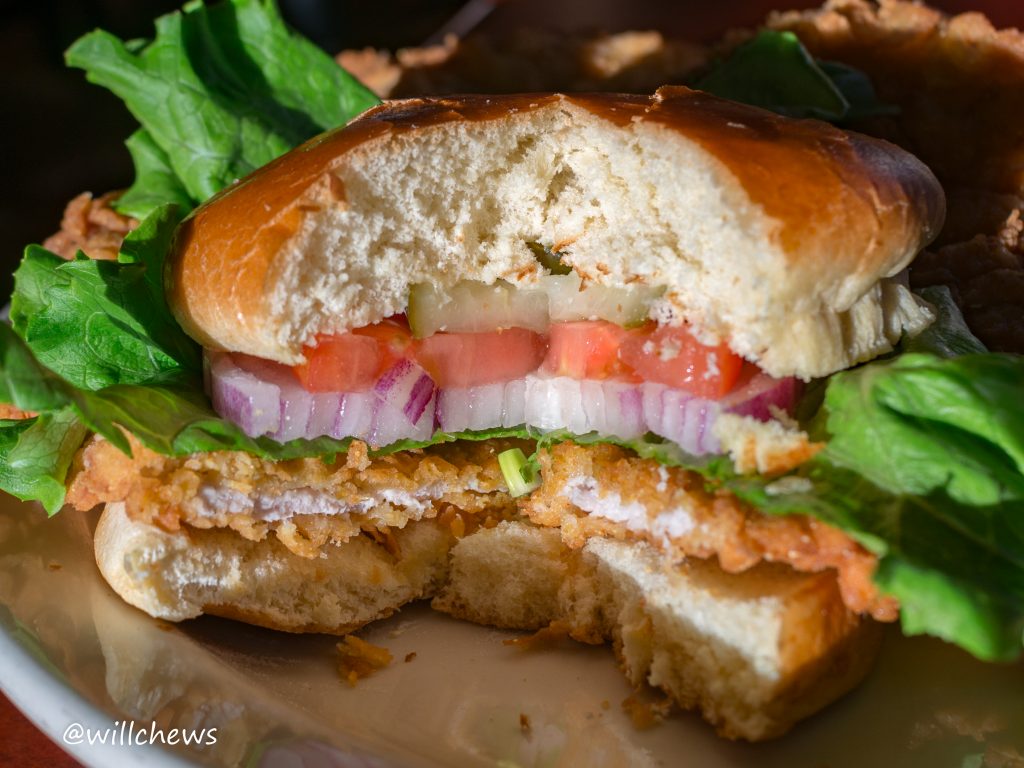
I wanted to like Aristocrat: it’s in a lovely neighborhood and it was fun eating in such a well-appointed space by myself so early in the morning. But the tenderloin was pounded too thinly and widely to retain much meat-eating sensation, and the Drakes fry mix was very off-putting both in terms of taste and smell.
Metro Diner (Clearwater Crossing)
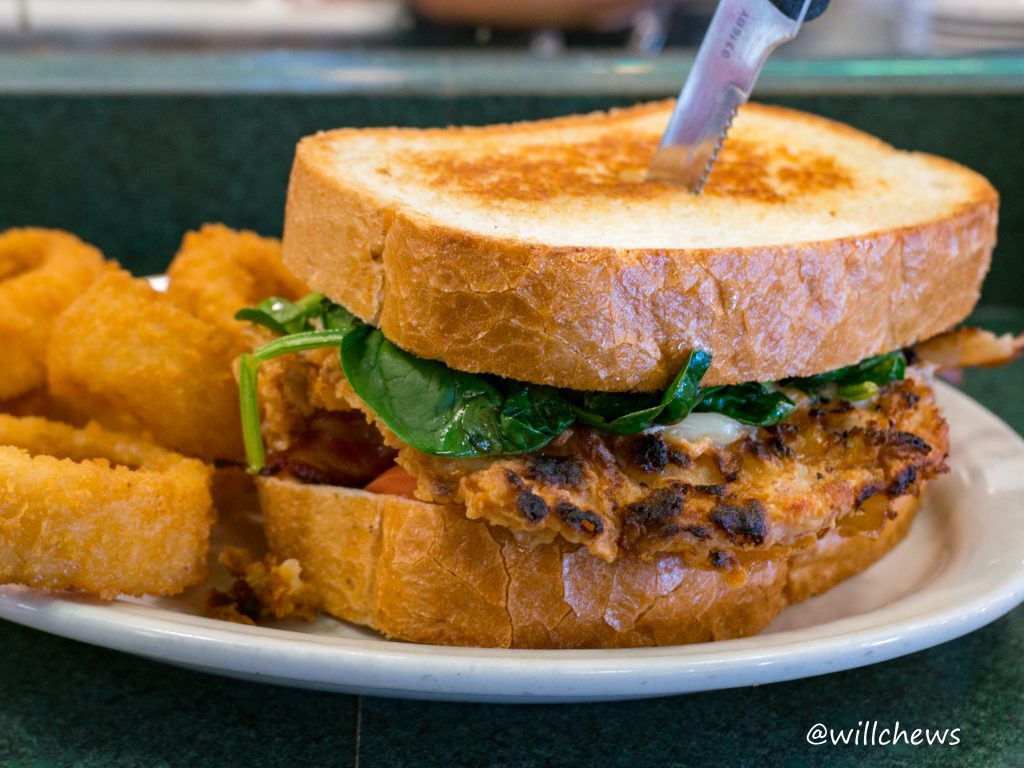
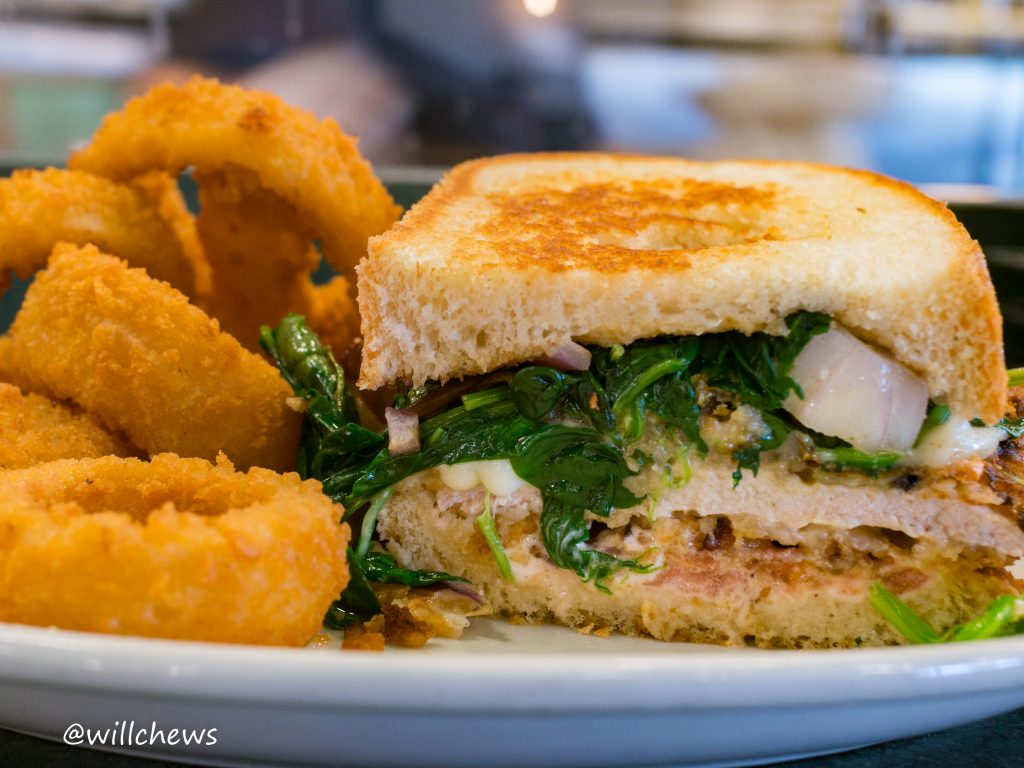
The Big Bern is made by dipping the pounded tenderloin in egg wash and breading it with seasoned flour. However, the pounding in sandwich did not appear to be uniform: one end of the tenderloin was about 1/4 inches thick, but the other end was double, about 1/2 inches thick. The meat was otherwise decent, not spectacular: a little moist, but not notably flavorful or juicy. Breading was crisp, but had more oil logged in there than other sandwiches. That said, what saved this sandwich is its combination of toppings that added depth to the sandwich, with the substantial slices of Italian loaf being of sufficient thickness and size to hold the sandwich together. While Indiana fried tenderloin sandwiches are “supposed” to have acres of fried pork extending beyond the bun, using crusty bread of sufficient size and thickness in proportion to the meat and toppings still makes for a superior sandwich. The toppings and bread was what elevated this sandwich in my final rankings, though I would strongly recommend ordering this without the bacon in the sandwich, as I think its flavor overpowers the rest of it at times.
Oasis Diner
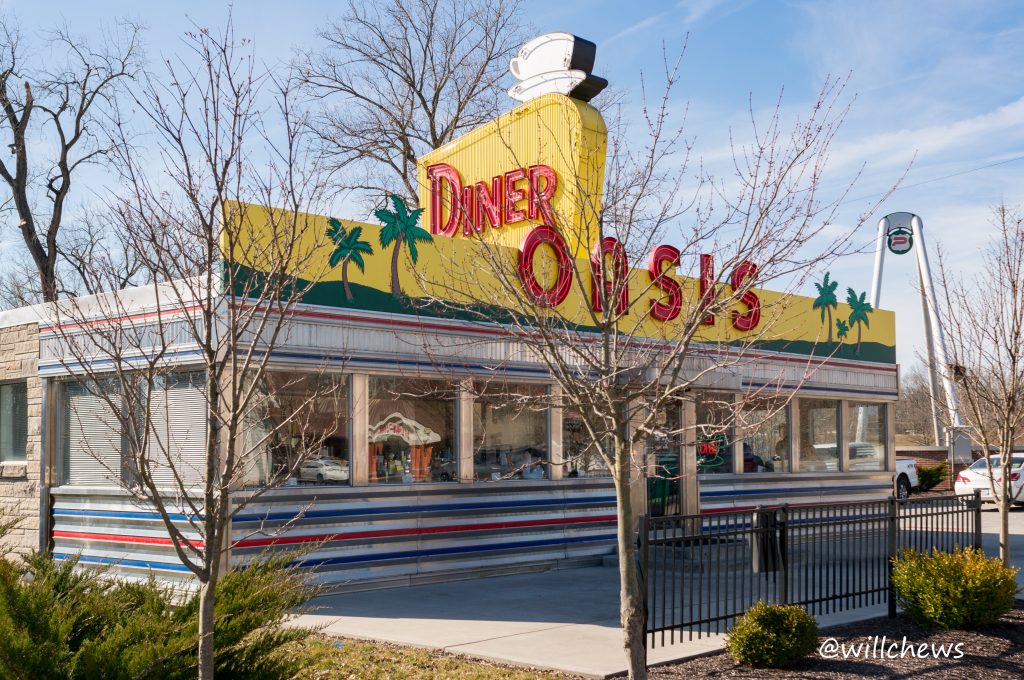
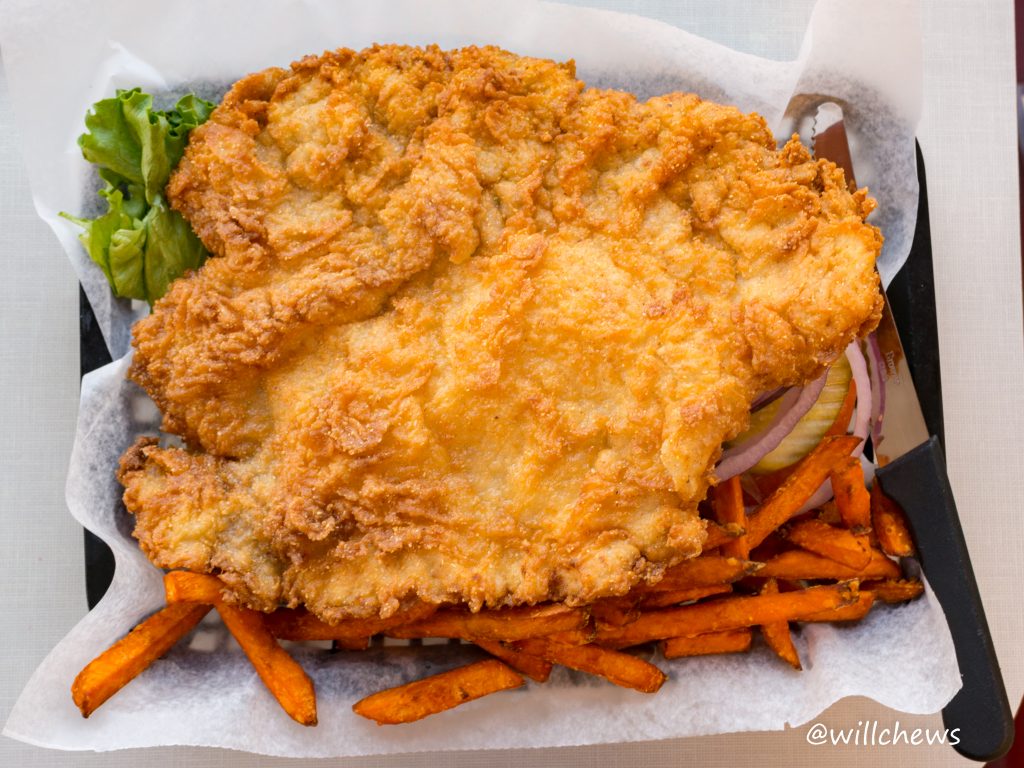
Oasis’s pork tenderloin comes in a number of iterations: one that I wanted to order was its Indiana platter, where the fried tenderloin is served under a large dollop of sausage gravy with eggs and home fries. But for the sake of analytical rigor I opted for the standard breaded tenderloin sandwich. Their tenderloin is cut in-house and pounded fresh to order to create a thickness of 1/3 inch (about 1cm). It’s then dipped in buttermilk, breaded and seasoned with a mix of flour, Drakes fry mix, and Lawry’s Seasoning Salt.

Once again, the presence of Drakes hurt the exterior flavor of the tenderloin, which I found to be salty and having off-putting chemical and white pepper notes similar to what I had at Aristocrat, though fortunately this time it didn’t feel as strong. The meat itself was moist and tender, but the flavor was almost overpowered by the garlicky intensity of the garlic mayo, which was so strong that I thought it had horseradish at first. Overall, this is a decent tenderloin sandwich, but the presence of Drakes–and to a lesser extent, the garlic mayo–detract from the sandwich.
The Mug (Greenfield)
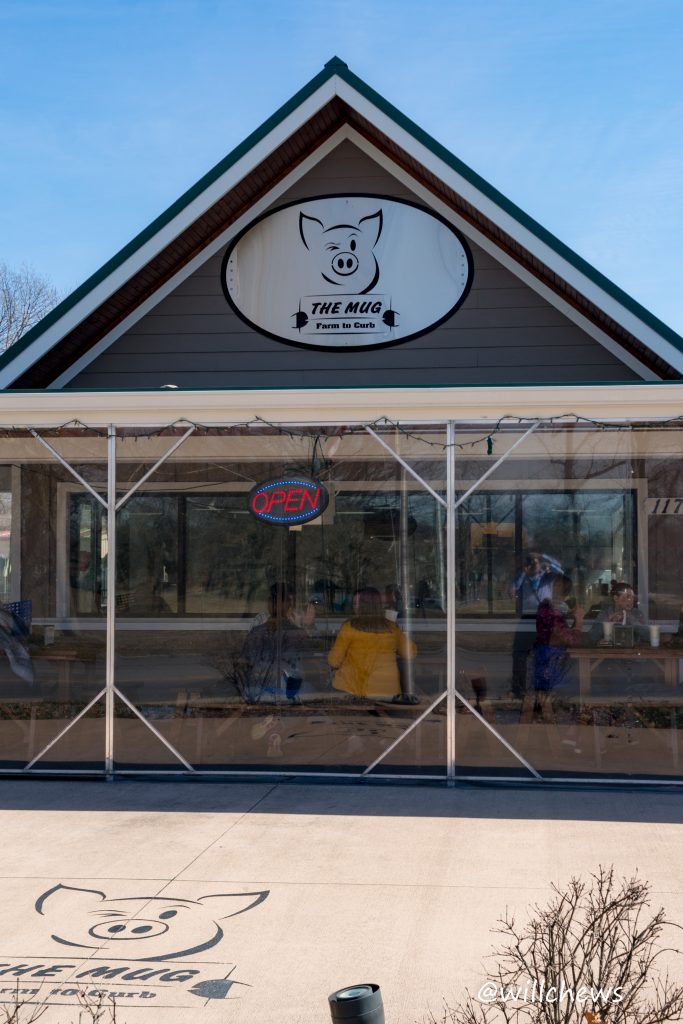
The final pork tenderloin of this trip was located at The Mug, located 25 minutes to the east of Indianapolis in the town of Greenfield. Started by software entrepreneur Chris Baggott, who shifted his attentions to sustainable farming after the company he co-founded was sold to Salesforce in 2013, The Mug’s founding principles are based in sustainable, drug-free, and humanely-raised livestock and poultry. As Baggott explained to me after overhearing me asking a staff member about The Mug’s tenderloin preparation methods–a pretty serendipitous meeting–he had created Tyner Pond Farm to raise livestock the right way, but soon realized that while there was plenty of demand for specific cuts of steak and chops, he had to find responsible ways to use the remaining cuts of beef and pork. Hence the inspiration behind The Mug and a number of his other restaurants, such as Griggsby’s Station, his gastropub or his ClusterTruck food-delivery service operating in a number of cities in the Midwest.

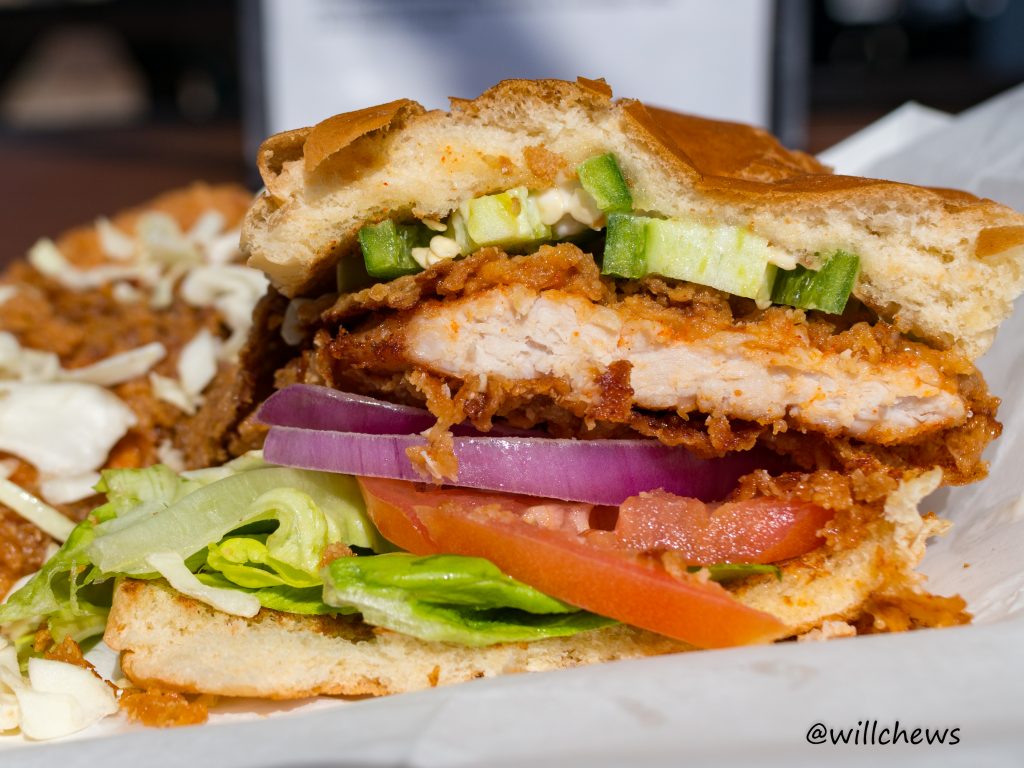
Aristocrat Pub
